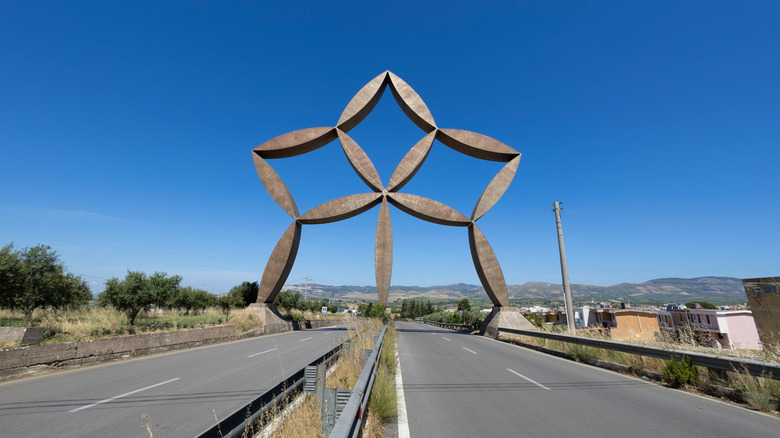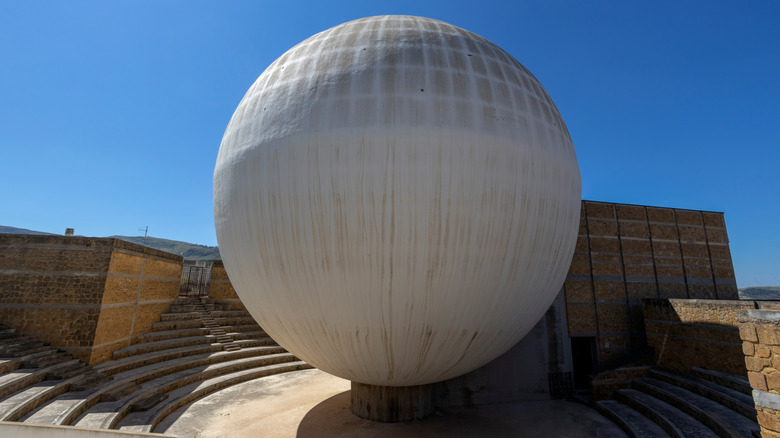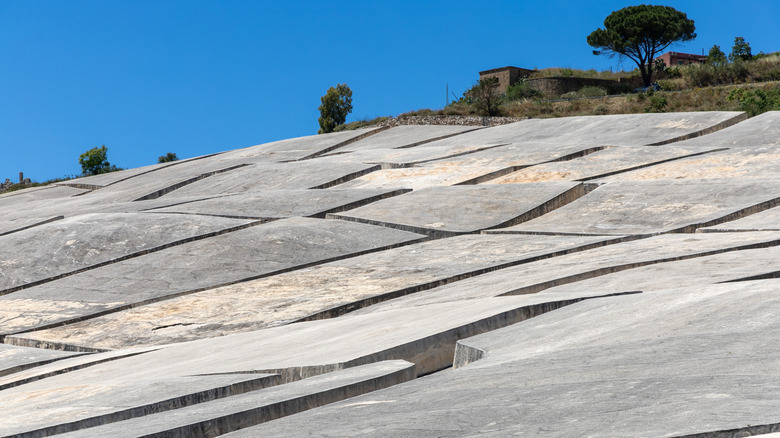The 'Capital Of Contemporary Art For 2026' Is An Astounding Outdoor Museum Filling An Entire Town In Sicily
Like many other towns in Sicily, including the warm, underrated village of Salemi, Gibellina was a humble agricultural town with roots in the Middle Ages. But in 1968, an earthquake devastated the Belice Valley, essentially razing Gibellina. Hundreds of people died, and experts deemed the town unsalvageable. From this tragic catastrophe, though, something beautiful emerged. When the new mayor Ludovico Corrao was elected the year after the earthquake, instead of recreating the town that was lost to destruction, he envisioned a utopia, a unique reimagining of the town that would both memorialize what was destroyed and serve as a living art experiment. Some of Italy's best artists and architects came to create the revamped metropolis and fill it with sculptural monuments.
The new city of Gibellina, named Gibellina Nuova, gained a reputation over the decades, arguably culminating in its title of "Capital of Contemporary Art 2026," the first of its kind awarded by the Italian Ministry of Culture. All around the city are artworks gracing the piazzas, roadsides, and vineyard-strewn landscape. These artworks are built into the city — they're public, there for anyone to marvel at any time of day. You can find this one-of-a-kind art-filled city in western Sicily, about an hour by bus or 45 minutes by car from the Palermo Airport in the famous coastal foodie paradise of Palermo.
Gibellina showcases public art on a monumental scale
Gibellina's entrypoint greets you with a giant star-shaped sculpture, Pietro Consagra's "Stella di Acciaio," arched over the road at the city boundary. The sculpture gives you a taste of what's to come, as you'll spot modernist sculptures throughout the urban grid rising up in unexpected places, all granted by various artists from around Italy. The built-from-scratch city itself has a graceful layout, resembling a butterfly with outspread wings. You'll notice that, unlike other, older Sicilian cities where narrow streets wind unpredictably, the streets here are spacious and rationally structured. You might also notice that they're relatively empty: Its population is under 4,000, as of 2021, but the city's dimensions are that of a place designed to have up to 50,000 residents.
Nevertheless, it's a beautiful place to stroll through, and the quiet feel of the town lends itself to an appreciation for its artworks. At the central Piazza XV Gennaio 1968, named for the date of the earthquake (January 15, 1968), you can admire the unique Town Hall, with its geometric portico, and Alessandro Mendini's "Civic Tower," a soaring concrete sculpture that's fitted with speakers to function as a giant musical instrument, playing sounds at determined intervals. In the adjacent Piazza del Municipio, the first thing to catch your eye will likely be the futuristic Chiesa Madre church conceived by Ludovico Quaroni, consisting of a large sphere resting at the center of an amphitheater-like structure. Around it, you can also view ceramic panels by Carla Accardi and the brutalist Meeting building by Pietro Consagra.
Walk the shrouded streets of the old Gibellina
To reach one of the most moving artworks of Gibellina, you have to drive about 30 minutes outside of the city — outside of the new city, that is. In the 1980s, the artist Alberto Burri created a massive earthwork on the site where the ruins of the old Gibellina stood. The project, called "Grande Cretto" ("Great Crack"), is the only work that exists in the former town site. Burri encased the destroyed town's rubble in a layer of white cement, leaving the original street plan in place as fissures in the cement. The artwork has sparked some controversy, as some of the former residents were dismayed to see the last remains of their homes buried in concrete. But to others, as local architect Vincenzo Mesina put it in Italy Segreta, the work lays "a shroud over the defined body of old Gibellina, allowing it to remain alive through the centuries."
It's worth walking through the carved cement paths of "Grande Cretto" yourself to get a feel for its sweeping, funerary grandeur. If you're traveling without a car, you could also get to "Grande Cretto" in about an hour by bicycle. The route showcases some of the beauty of Gibellina's surrounding countryside in the Belice Valley, where ancient vineyards on the hillsides have survived through the earthquake. Gibellina sits along Sicily Divide trail, a stunning, tourist-free bike route passing through Sicily's authentic small towns.


